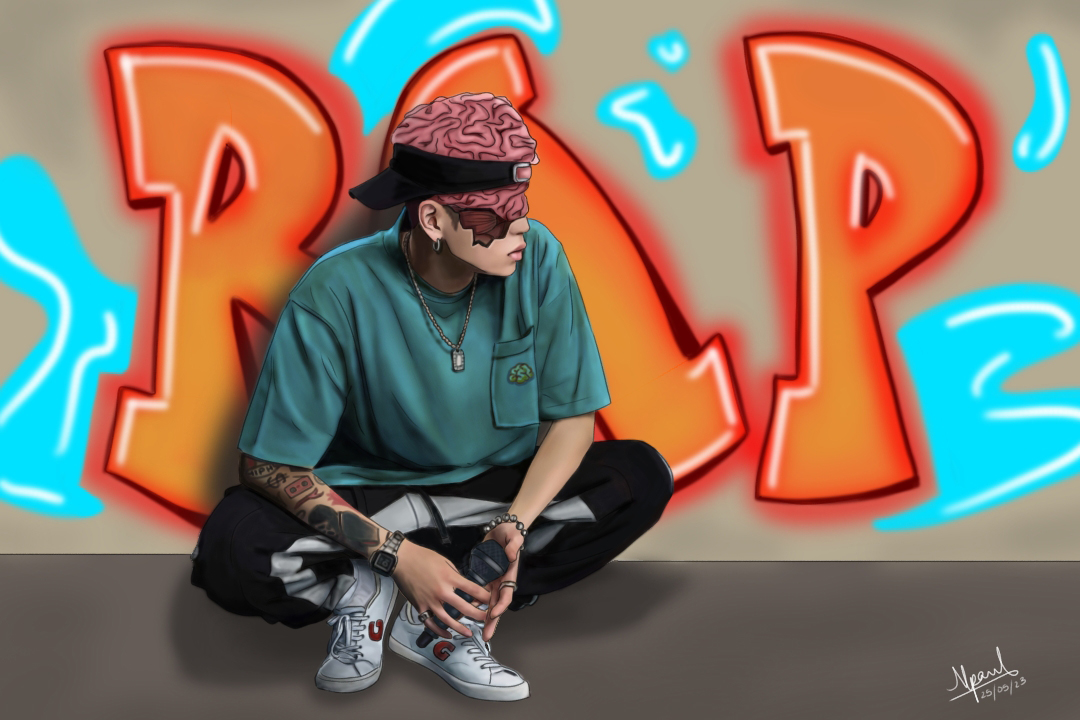You’re sitting in your room, all comfy and cozy. You put your headphones on, and you decide to listen to some rap. You take out your phone and play the good ol’ classic you always play: “Best Rap of All Time.”
After some surfeit of head-nodding and finger-snapping, you inevitably stumble upon a track by Eminem, and before you know it, you’re caught up in his lightning-fast flow and mind-bending wordplay. You try to rap along. But as you do, you realize just how darn difficult it is to keep up with his lyrical wizardry. Finally, you find yourself wondering, “How on Earth does he do it?”
Freestyle rap is a one-of-a-kind musical expression that combines improvisation, lyrical rhyme, and tonal rhythm. It’s a tightrope between verbal dexterity and innovative spontaneity, where artists like Eminem effortlessly lay down mind-boggling verses on the spot.
In 2012, a study analyzed the brain activity of freestyle rap artists while they were freestyling, particularly examining the neural correlates of lyrical improvisation. The results revealed fascinating changes in brain activation patterns: activity decreased in certain brain regions involved in cognitive control and self-monitoring, and increased in other regions associated with creative thinking, and language processing.
As rappers freestyle, the brain regions responsible for supervisory functions, such as the dorsolateral prefrontal cortex (DLPFC), take a backseat, allowing for a freer expression of creativity. Meanwhile, the cingulate cortex and medial prefrontal cortex (mPFC) become more active, supporting the cognitive processes involved in improvisation, motivation, and motor coordination.
The cingulate cortex — which is a network of brain regions involved in various functions associated with motivation, emotion, and motor coordination — exhibits significant activation during freestyling. Its involvement in freestyle rap likely lies in its contributions to the coordination of motor movements. One specific region of the cingulate cortex that became significantly activated during freestyle performances was the anterior cingulate cortex, which is involved in various cognitive functions, including attention allocation and error detection. The cortex’s activation during freestyling suggests that it plays a role in maintaining focus and monitoring the flow of improvised lyrics.
Another region that showed increased activity was the mPFC. Associated with self-referential thinking and self-expression, the mPFC’s activation during freestyle rap indicates a role in the generation of spontaneous ideas and personal experiences that form the foundation of freestyle lyrics.
A network of brain regions involving the medial prefrontal cortex, cingulate motor cortex, perisylvian cortex, and amygdala — typically responsible for motivation, language, and movement — are also strongly correlated with freestyle rap. Rappers engage this network as they tap into their personal experiences for material, facilitating unique lyrical content and enabling what scientists call ‘the flow’ — a state in which the subject is deeply focused on the creative, improvisatory activity, encouraged by self-motivation and less inhibited by self-consciousness.
Furthermore, language-related regions such as the left inferior frontal gyrus (IFG) and the posterior superior temporal gyrus (pSTG) light up during freestyle rap. These regions work together to facilitate word retrieval and the instantaneous weaving of rhymes, metaphors, and puns.
When rappers stick to pre-established lyrics and structures, the DLPFC takes center stage, overseeing memory retrieval and planning. But during freestyling, reduced activity in the DLPFC allows the more creative areas — such as the mPFC, cingulate cortex, and language-related regions like the left IFG and pSTG — to shine, modulating improvisation and linguistic prowess.
When Eminem said, “You better lose yourself in the music,” there might have been some neurological truth to this sentiment. There is real differential activation in brain regions to make artists “lose” some restraint and regulation during freestyle, considering how the improvisatory brain regions allow freestyle artists to lose some of the control imposed by regulatory brain regions.
The shifting activation patterns in the brain during freestyling, moving from controlling regions to improvisatory ones, allow freestyle artists to transcend some of the constraints imposed by regulatory brain regions. This allows for a less hindered expression of spontaneous ideas, rhythm, and lyrical creativity, aligning with the sentiment expressed by Eminem.


